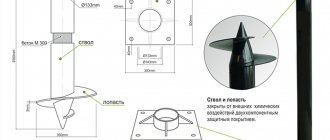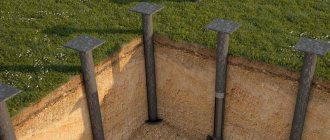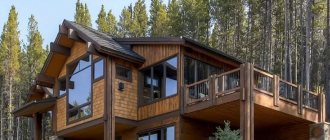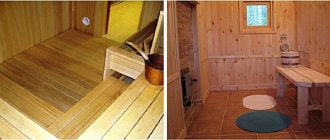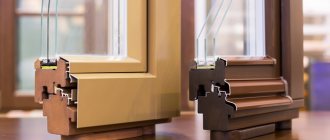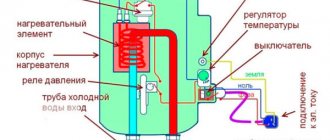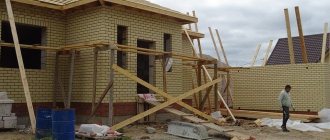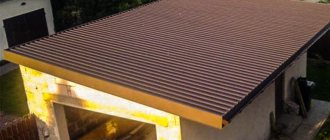A concrete foundation on supports driven into the soil by screwing is considered a strong and reliable foundation. Concreting of screw piles is carried out to increase the strength characteristics of the base, since the internal cavity of the structure is hollow, condensation can form there and, as a result, the metal is subject to corrosion. Filling with cement with fine fractions or a sand-cement mixture serves as a barrier to the penetration of moisture into the trunk and increases the bending strength of the structure. Mounting a screw-type foundation is considered one of the most cost-effective construction methods.
Description of pile types
Let's first take a look at the definition of each type of pile.
About screw piles
Screw piles are hollow steel pipes with a sharp tip into which a blade is welded. When installed from the inside, they are filled with a cement-sand mixture, which prevents internal corrosion, and a cap is placed on top. To protect them from the effects of the external environment, they are coated with an anti-corrosion coating. As a rule, these are epoxy compounds or galvanization. Relatively recently, manufacturers have appeared on the market that use double corrosion protection. More on this below.
Installation of screw piles Source www.severecosrub.ru
About reinforced concrete piles
Reinforced concrete piles are a concrete rod with a reinforcement cage. For private housing construction, supports with a cross section of 150x150 mm or 200x200 mm are used. When choosing reinforced concrete piles, you need to pay attention to the grade of concrete from which they are cast and its frost resistance class. These characteristics determine how strong and durable the foundation will be.
Let's move on to comparing technologies. To do this, we will take “Standard-1” screw piles from the KKZM plant, screw piles with two-level protection of the HelixZINC series from the HelixPRO company and reinforced concrete driven piles from the manufacturer MONTAZHSVAY.RF. What aspects are we interested in? Firstly, a rational cost ratio for the planned construction, secondly, the convenience and possibility of installation for the site, thirdly, the price of components, labor and delivery.
Justification for the need for concreting the shaft of a screw pile
Concreting screw piles has a beneficial effect on the mechanical properties of the structure, helping to increase rigidity, strength, and elasticity. Nevertheless, opponents of such reinforcement point to the danger associated with the difference in the thermal expansion coefficients of metal and concrete. In their opinion, this can lead to the formation of microcracks in which moisture will accumulate, which will lead to the activation of corrosion processes.
But such an objection is unlikely to find many supporters, since it is refuted by practice. Indeed, the high strength characteristics of building materials such as reinforced concrete or pipe concrete are beyond doubt, so there is no reason to believe that filling screw piles with concrete can negatively affect their corrosion resistance.
In addition, for the development of corrosion, in addition to the presence of moisture, constant access of oxygen is necessary, and the concreting procedure displaces air from the pile shaft. It should also be taken into account that concrete is an alkaline environment, favorable for exposure to ferrous metals, and therefore does not have any noticeable chemical or physical effect on metal structures.
Value for money
To begin with, we note that on screw piles, as well as on reinforced concrete, you can build any type of wooden houses (frame-panel, half-timbered, timber, log), baths, garages, gazebos, outbuildings, etc. The main thing is to understand the relationship between price and quality. If you are planning to build a house for permanent or seasonal residence and the conditions on the site are good, then it’s all about the price. Please note that reinforced concrete piles have a greater load-bearing capacity compared to screw piles. But despite this, when designing, they have the same step, that is, it will not be possible to save on quantity.
Continuing my thoughts... If your plans include a bathhouse, garage or some small house, then it is more profitable to use screw piles. Now the question is: which ones? In appearance, most of them look the same, since they have a black coating on top (if we are not talking about galvanization). But coverage is different from coating, as they say. Today the price varies from 70 to 700 rubles per liter. You understand that not everything that is black protects metal from rust. It was not in vain that we paid attention to the proposal of the KKZM plant. “Standard-1” is a budget option for piles with a more or less high-quality protective coating. The manufacturer monitors compliance with technology, does not use used rolled metal, and purchases anticorrosive materials that have been proven over the years. Such piles will last more than 80 years if installed correctly. The main thing is to choose the required size. Typically, supports with a diameter of 108 mm are chosen for construction. The design department will be able to carry out calculations for a specific house.
Speaking about screw piles with double corrosion protection HelixZINC, we note that these supports have an increased service life. The manufacturer specifies 120 years of operation. The meaning of the technology is that the piles are coated with hot zinc, and on top - with an epoxy composition. For what? During installation, the top layer of the coating may be damaged by stones in the ground. At the site of chips and scratches, corrosion will occur first, which will have a detrimental effect on the foundation as a whole. The barrier layer provides a guarantee against premature destruction of the metal. Of course, galvanized piles differ in cost from regular ones. But when it comes to building a family nest, the difference will seem insignificant. But for simpler buildings, ordinary piles are also suitable.
If we are talking about building a huge wooden house with a large number of rooms, then it is better to give preference to reinforced concrete driven piles. One support can withstand loads from 9 to 60 tons depending on the section, while a screw pile has a load-bearing capacity of up to 10 tons depending on the diameter.
Reinforced concrete piles are a concrete rod with a reinforcement cage Source kkzm.ru
Screw: pros, cons, area of use
Screw piles are metal products with a wall thickness of at least 4 mm. The lower part of the piles is equipped with blades and a sharp end, which allows the structure to be screwed into any soil except rocky rocks.
Advantages of screw supports:
- Possibility of installation on your own using a lever;
- high speed of construction;
- no preliminary site preparation is required;
- Possibility of installation in any weather conditions;
- affordable price of products;
- maintainability with the possibility of reuse;
- strength and stability of the foundation;
- a wide range of product offerings on the domestic market.
The disadvantages of the technology include:
- the tendency of the metal to destruction under the influence of corrosive processes;
- during the installation process, a low-quality waterproofing coating may wear off;
- difficulties in arranging basements.
Scope of application of screw pipes:
- Construction of low-rise buildings made of brick, wood, foam blocks, concrete.
- Strengthening existing foundations.
- Design of billboards and landscape decor elements.
- Construction of lightweight buildings for agricultural and industrial purposes.
- Construction trusts of fences, garages, gazebos.
Priming
Much depends on the conditions at the site. If the soil is highly acidic, then installing screw piles is dangerous, as they will quickly rot. Therefore, it is worth doing a soil test before starting construction to avoid risk.
There are areas with a large difference in ground level or water-logged soil. In this case, on the contrary, it is worth giving preference to screw piles, because during installation they can be increased until the blade reaches dense soil. In addition, due to the wide base, the screw pile will be more stable in this type of soil, where a concrete pile can simply fall deep into the ground.
What materials will be needed?
When laying out the foundation, you may need some tools. We recommend stocking up with a level, tape measure, hammer, shovel and welding device. In addition, you may need a cement mixer and lacing.
Before starting the process, it is necessary to lower the frames made of reinforcement. Asbestos-cement pipes can also be suitable for their role.
- The use of asbestos-cement pipes is relevant if the soil is quite loose and characterized by crumbling.
- Provided the soil is dense, concrete can be poured directly into the borehole. It is also necessary to fill the bottom of the well with sand. The thickness of the layer is about 25 centimeters. The top should be covered with crushed stone material in a layer of 10 centimeters.
All these operations help in protecting the base of the LF foundation from dangerous actions caused by washing away by excess moisture. In addition, with their help, other factors that negatively affect the design will be eliminated.
Installation of a fence using a pile foundation is carried out as follows:
- The base is tied around the entire perimeter using reinforcing materials. Formwork is placed in a circle.
- The reinforcement can be scalded or tied with wire. The best option would be to use reinforcement with an average diameter of 13 millimeters.
- You should not skimp on the thickness of the reinforcement. This entails a deterioration in the reliability of the piles. They simply may not withstand the entire weight of the building and cracks are likely to occur on them. The consequences are disastrous for the entire building, because if water gets into the pile cracks, the foundation will be destroyed.
One of the newest materials in this area is fiberglass reinforcement. Its main advantage is its cost and light weight. As for the width of the LMF foundation, it is determined based on the parameters of the building itself. Usually it is something around four hundred millimeters.
Delivery and installation process
Reinforced concrete piles are installed using a mini-pile driving machine. That's what they're called - driven ones. The crawler-mounted machine moves independently around the site, operates at high and low temperatures, and installs supports quite quickly. But delivering it to the site requires special equipment. However, in one shift it is possible to install about 40 reinforced concrete piles, that is, the foundation for a house.
Mini-pile driving machine drives reinforced concrete piles Source kkzm.ru
Screw piles are installed manually, electromechanically or, if absolutely necessary, using a hole drill. The best option is electromechanical installation. Today, any serious company offers it. How does this happen? Screw piles are installed using manual hydraulic machines. That is, the mounting hole is inserted into the gearbox, which creates torque. Compared to the manual method, the electromechanical method has advantages in terms of penetration and installation speed.
If the area where it is necessary to install the foundation is difficult to access for one reason or another, the only possible way is manual installation of screw piles.
Technology for constructing a foundation from bored supports
In frequent construction, piles with a non-removable shell are most often used
When installing a foundation base made of bored supports, several options for constructing a pile core are used:
Pouring supports without shells - this option is used only in stable soils with a minimum groundwater level
To construct holes for supports without shells, it is important that the edges of the wells do not crumble, are not washed away by groundwater, or change their geometric shape. To strengthen the well, clay or concrete mortar can be used during drilling, which reliably strengthens the walls of the prepared pits. Installation of pile rods with a removable shell - this technology is used in water-filled soils
The siege pipe, made in the shape of a steel cylinder, prevents the collapse of the well walls and the erosion of concrete during the process of filling the cavity. After filling the pipe with concrete mixture, the casing is removed to the surface. Pouring piles using a bored method with a permanent shell (not removable) - this method is practiced when constructing foundation supports on soils with a high groundwater level, composed of rocks with low bearing capacity, which can be washed away by groundwater during concreting.
We recommend watching how the work on installing bored supports takes place.
https://youtube.com/watch?v=4iHSdnBLrwc%3F
Bottom line
| Technology / Structure: | Bathhouse / Terrace / Garage | Wooden house (timber/log/frame) | Aerated concrete house (foam block, aerated concrete) | Stone house (brick, monolith) |
| Screw piles | 5 | 5 | 3 | X |
| RCC driven piles | X* | 3 | 5 | 5 |
* irrational costs
Small buildings and wooden houses made of timber or logs
Speaking about garages, bathhouses, terraces, gazebos, fences, cabins and other small and light buildings, we note that it is not rational to use reinforced concrete piles. For an ordinary timber or log house with a residential attic, screw piles are often also more preferable. But if we are talking about a large house, and you are betting on durability, then you can consider the option of a reinforced concrete driven foundation, because in the ground concrete practically does not collapse and does not deteriorate.
House made of lightweight concrete (foam blocks or aerated concrete)
For this type of building, both screw piles and reinforced reinforced concrete piles are suitable. In the first case, it is worth choosing supports of large diameter and further strengthening the foundation. In the second, it is enough to choose the right section. In addition, on reinforced concrete piles paired with a shallow grillage of 600x400 mm, you can safely build even a three-story brick house.
Brick or monolithic house
For heavy masonry structures, reinforced concrete piles are definitely recommended. Such houses weigh a lot, and the load-bearing capacity of screw piles will not be enough. Or rather, to ensure the necessary load-bearing capacity, so many of them will have to be screwed in that the cost of the foundation will be comparable to a similar concrete-driven one. In such cases, driven reinforced concrete piles should be used.
Ratings 0
Brands of concrete used
Before starting work, you need to find out which concrete is best used to strengthen the screw post. Usually, low-fraction concrete M200, M300 is used for concreting.
Composition of concrete M200.
Brand M200 is most often used for the construction of one-story or two-story houses with light ceilings. This brand is used when working with reinforced concrete products; according to its strength characteristics, it is classified as structural.
The M300 grade is suitable for the construction of foundations for private houses up to five floors high. It is recommended to adapt such concrete to monolithic types of floors.
